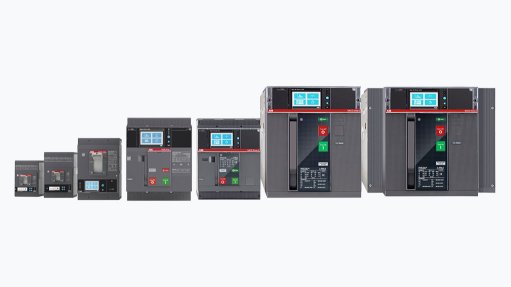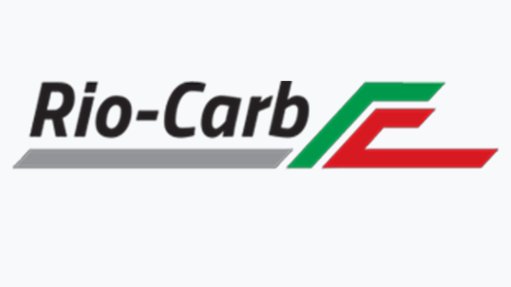Aligning corporate learning and development plans to business strategies
In today's fast-paced corporate landscape, ensuring that learning and development (L&D) plans align seamlessly with business strategy is not just a best practice—it is a necessity for achieving a competitive edge. In this article, SA Business School and Alefbet Learning COO AntonVisser dissects why so many L&D programmes fall short of delivering tangible business benefits.
A key factor in a successful L&D programme is a strong alignment between the development objectives of the employee and the strategic objectives of the business, with a clear view of what the expected outcomes are for the individual and business in terms of impact, performance and growth.
However, the reality is that most L&D programmes fail to impact business objectives as there is seldom alignment between the two, which means that very few employees will apply the new skills learned in L&D programmes in their work environment and job roles. Think of the enormous opportunity cost in what is lost here!
Take the approach to learnerships as one example of this lost opportunity, where many South African corporate organisations spend millions of rands on learnerships for their employees as a tick-box, compliance exercise to gain broad-based black economic empowerment points, without alignment to the business strategy. It is a massive lost opportunity to leverage the real power of learnerships – which can and should be customised for the needs of the business and employees – to achieve a true competitive advantage through meaningful career and skills progression that takes the business forward.
Learnerships: The Foundation of a Learning Culture
For every business considering a learnership programme, itstarts with working with a professional, credible training and education partner that has the best interests of your business and the people that are trained and employedtatheart. Learnerships should lay the foundation forcreating a learning, high-performance culture within the business, that then feeds into further education and training initiatives. The track record and integrity of the L&D training partner cannot be emphasised enough in helping to build this intentional learning pathway that aligns to your business strategy and objectives.
The best way to align the corporate L&D strategy is to properly understand the business, its strategy in the short, medium and long term, and then align the roles of the functional teams in delivering on the business objectives and mission, while closing the skills gaps in getting there. Key in this is having a continuum of how the learning journey unfolds in the next years, within the context of the business strategy. This approach also goes a long way in gaining the respect and buy-in of your teams to the L&D strategy – suddenly your people get to see and understand how and where they fit into the business, and how their learning and skills development contributes to the bigger picture.
Once this is aligned, the L&D programme that is embarked upon must be customised and designed to deliver value to the organisation and its employees. What better business success story is there to tell than having your own employees developed from within into management and leadership roles from the ground up, with a deep understanding of every operational aspect of the business and the market it operates in? And then having a pool of young talent coming through, building your succession and skills pipeline.
One of the biggest disconnects we see in organisational learning is the chasm between the L&D that happens at a leadership/executive management level, versus what happens at lower and entry levels within the organisation. Two extremes exist on this front. While business success is pinned on having a solid leadership funnel, businesses often spend a disproportionate amount on highly customised leadership training, overspending on each senior individual. On the other end of the spectrum, there is investment in off-the-shelf, generic learnership programmes for entry-level employees – for example an NQF 4 general management course – that has absolutely no customisation to the needs of the business or their job roles.
No Cookie Cutter, Off-the-Shelf Approach
If an organisation is going to be spending R5-million on learnerships for 100 employees, what level of customisation is needed to make those learnerships truly relevant to the employee and their current skills and capabilities, and the needs of the business, so that the qualification obtained at the end of it is relevant in their job roles and lines them up for the next phase of their learning journey? What do the next five years look like for that employee in the business? Does this align with the strategic direction of the business and the skills and knowledge that will be needed?
The reality is that with the right L&D partner, every learnership can be customised to the business strategy in the same way that executive training is approached, as long as it meets the requirements in terms of notional hours and the formative and summative assessments.This means that every intervention teaches the learner/employee about the business, at a simplified and understandable level, while making the skills and knowledge learned relevant and highly applicable in their work roles.
The next steps in their learning journey should also be mapped out as part of the process of preparing them for further learning;once they have progressed in building their knowledge through learnerships and earned their qualification, what comes next?
An Intentional Approach to L&D
Building this L&D strategy is incredibly tough, but essential.SA Business School has defined an intentional approach to how L&Dof employees should take place in a manner that supports the business strategy:Firstly, recognise that sometimes, L&Dis not always the solution and on its own, it is not a change strategy. The objective and justification for every L&D programme should be thoroughly interrogated and fit for purpose in the bigger picture of the business strategy and mission. In a bid to tick boxes and earn credits, we often see L&D managers throwing as much as possible at their employees by way of training programmes in the hope that something will stick.
Effective and sustainable learning always happens from the “inside-out” and starts with preparing the learner. Learning must be human-centered and cater for both the individual development and career growth aspirations of the employee and organisational capability building and transformation.
Realise that learning is about change, stretch and transformation, it is about delivering the appropriate amount of stretch or challenge for each learner/employee.
Also, learning should be based on activity–centric design. In other words, practical, business-driven action learning that can be applied straight away and has relevance and context.Further, learning is a journey not an event.Use Agile Learning Design, with input from participants to build into their learning programme so that there is ownership and accountability.
Businesses must integrate multiple stakeholders – from the participant, line manager, facilitators, human resources business practitioner – across all phases of learning.
Also, use real-world, business-driven metrics to measure and demonstrate the impact of learning for both the employee and the business.
Learnerships must also evolve for a hybrid world of work. SA Business School has taken its learnership programmes online, revolutionising the way that learnerships are delivered in a rapidly changing organisational training and education environment. The online learnership is about interactive, online learning in combination with practical work experience, and should not be confused with ‘screen learning’. It gives learners a powerful introduction to an evolved world of work where more work and training is done online and remotely than at any other time in our history. The big benefit is that companies that have geographically dispersed learners across the country can now bring them together in one online learning platform where they get to interact with their trainers and content, at their own pace.
Transfer of learning and knowledge is the ultimate aim of training investment and the key to maintaining competitive advantage in today’s rapidly changing operating environment.By aligning the L&D strategy with the business strategy, it means that there’s no wastage of L&D investment, that employees are engaged in their learning journey and take ownership and accountability from the outset, and all role players and line managers are involved in the process.
Fundamentally, ensuring that ‘what is learned’ can actually be applied in a business that embraces the knowledge and skills of its people is key to business competitive advantage.
Yellow Zone Stand P77
Article Enquiry
Email Article
Save Article
Feedback
To advertise email advertising@creamermedia.co.za or click here
Comments
Press Office
Announcements
What's On
Subscribe to improve your user experience...
Option 1 (equivalent of R125 a month):
Receive a weekly copy of Creamer Media's Engineering News & Mining Weekly magazine
(print copy for those in South Africa and e-magazine for those outside of South Africa)
Receive daily email newsletters
Access to full search results
Access archive of magazine back copies
Access to Projects in Progress
Access to ONE Research Report of your choice in PDF format
Option 2 (equivalent of R375 a month):
All benefits from Option 1
PLUS
Access to Creamer Media's Research Channel Africa for ALL Research Reports, in PDF format, on various industrial and mining sectors
including Electricity; Water; Energy Transition; Hydrogen; Roads, Rail and Ports; Coal; Gold; Platinum; Battery Metals; etc.
Already a subscriber?
Forgotten your password?
Receive weekly copy of Creamer Media's Engineering News & Mining Weekly magazine (print copy for those in South Africa and e-magazine for those outside of South Africa)
➕
Recieve daily email newsletters
➕
Access to full search results
➕
Access archive of magazine back copies
➕
Access to Projects in Progress
➕
Access to ONE Research Report of your choice in PDF format
RESEARCH CHANNEL AFRICA
R4500 (equivalent of R375 a month)
SUBSCRIBEAll benefits from Option 1
➕
Access to Creamer Media's Research Channel Africa for ALL Research Reports on various industrial and mining sectors, in PDF format, including on:
Electricity
➕
Water
➕
Energy Transition
➕
Hydrogen
➕
Roads, Rail and Ports
➕
Coal
➕
Gold
➕
Platinum
➕
Battery Metals
➕
etc.
Receive all benefits from Option 1 or Option 2 delivered to numerous people at your company
➕
Multiple User names and Passwords for simultaneous log-ins
➕
Intranet integration access to all in your organisation





















